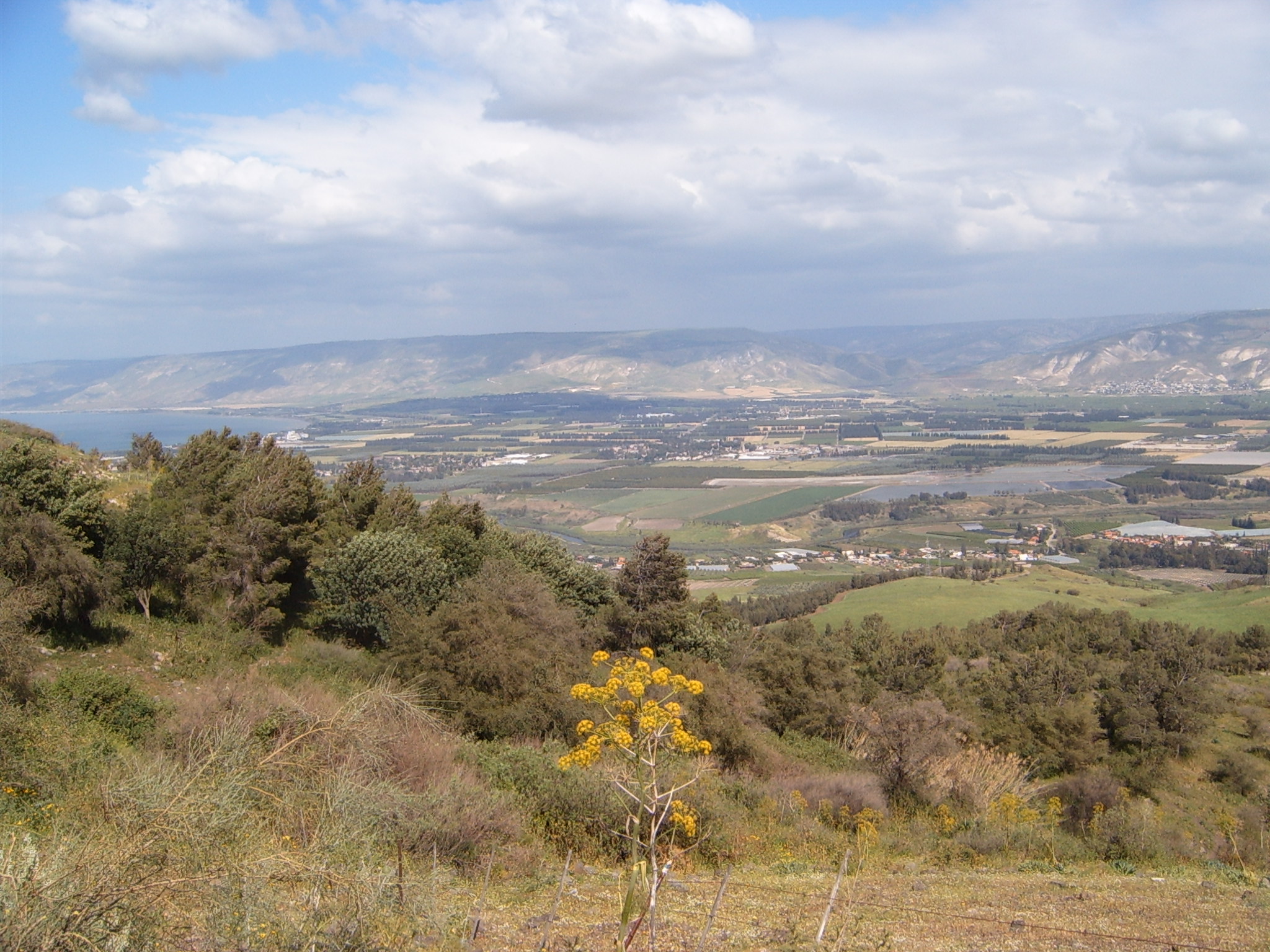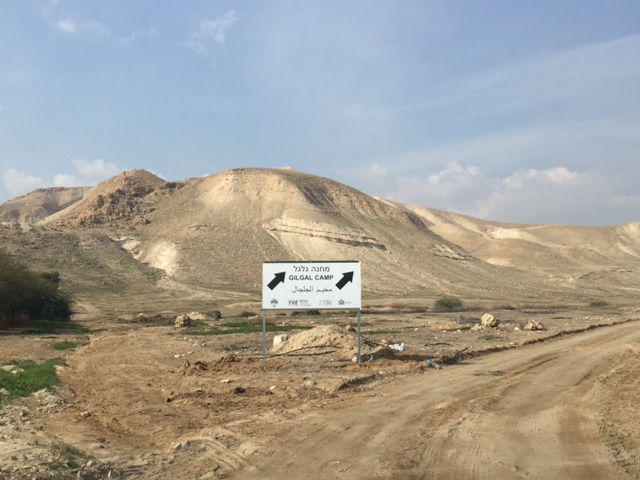|
Ancient Underground Quarry, Jordan Valley
An ancient underground quarry in the Jordan Valley was discovered in 2009 by University of Haifa archeologists.Photos: "Glorious" Ancient Chamber Found in Israel (3) National Geographic (June 30, 2009). The quarry is located about 3 miles (5 km) north of , . Description The cave is located in the desert north of Jericho, 10 metres (40 ft) beneath the surface. It spans more than 1-acre (0.4-hectare) and its main hall is supported by 22 pillars. ...[...More Info...] [...Related Items...] OR: [Wikipedia] [Google] [Baidu] |
Jericho
Jericho ( ; ar, أريحا ; he, יְרִיחוֹ ) is a Palestinian city in the West Bank. It is located in the Jordan Valley, with the Jordan River to the east and Jerusalem to the west. It is the administrative seat of the Jericho Governorate of the State of Palestine and is governed by the Palestinian National Authority as part of Area A. In 2007, it had a population of 18,346.2007 PCBS Census . (PCBS). From the end of the era of , the ... [...More Info...] [...Related Items...] OR: [Wikipedia] [Google] [Baidu] |
West Bank
The West Bank ( ar, الضفة الغربية, translit=aḍ-Ḍiffah al-Ġarbiyyah; he, הגדה המערבית, translit=HaGadah HaMaʽaravit, also referred to by some Israelis as ) is a landlocked territory near the coast of the Mediterranean Sea, Mediterranean in Western Asia that forms the main bulk of the Palestinian territories. It is bordered by Jordan and the Dead Sea to the east and by Israel (see Green Line (Israel), Green Line) to the south, west, and north. Under Israeli occupation of the West Bank, an Israeli military occupation since 1967, its area is split into 165 Palestinian enclaves, Palestinian "islands" that are under total or partial civil administration by the Palestinian National Authority (PNA), and 230 Israeli settlements into which Israeli law in the West Bank settlements, Israeli law is "pipelined". The West Bank includes East Jerusalem. It initially emerged as a Jordanian-occupied territory after the 1948 Arab–Israeli War, before being Jordani ... [...More Info...] [...Related Items...] OR: [Wikipedia] [Google] [Baidu] |
Jordan Valley (Middle East)
The Jordan Valley ( ar, غور الأردن, ''Ghor al-Urdun''; he, עֵמֶק הַיַרְדֵּן, ''Emek HaYarden'') forms part of the larger Jordan Rift Valley. Unlike most other river valleys, the term "Jordan Valley" often applies just to the lower course of the Jordan River, from the spot where it exits the Sea of Galilee in the north, to the end of its course where it flows into the Dead Sea in the south. In a wider sense, the term may also cover the Dead Sea basin and the Arabah valley, which is the rift valley segment beyond the Dead Sea and ending at Aqaba/Eilat, farther south. The valley, in the common, narrow sense, is a long and narrow trough, long if measured " as the crow flies", with a width averaging with some points narrowing to over most of the course, before widening out to a delta when reaching the Dead Sea. Due to meandering, the length of the river itself is . This is the valley with the lowest elevation in the world, beginning at below sea level ... [...More Info...] [...Related Items...] OR: [Wikipedia] [Google] [Baidu] |
Adam Zertal
Adam Zertal ( he, אדם זרטל; 1936 – October 18, 2015) was an Israeli archaeologist and a tenured professor at the University of Haifa. Biography Adam Zertal grew up in Ein Shemer, a kibbutz affiliated with the Hashomer Hatzair movement. Zertal was severely wounded in the Yom Kippur War. He later told a reporter for ''The Jerusalem Post'', “I spent a year at Hadassah Hospital in Jerusalem, and I became interested in archaeology. Although I had argued that the Bible was full of myths, I decided after my recovery to travel the land by foot to look for archeological evidence.” Archaeology career Zertal claimed to have identified several sites he worked on as being connected to sites, events and characters from the narratives in the Hebrew Bible: * Joshua's altar. A structure on Mount Ebal identified as an early Israelite altar. * Sisera's town. Zertal headed the excavations at El-ahwat, which he has identified as the Biblical Harosheth Haggoyim, a fortress described ... [...More Info...] [...Related Items...] OR: [Wikipedia] [Google] [Baidu] |
Israel
Israel (; he, יִשְׂרָאֵל, ; ar, إِسْرَائِيل, ), officially the State of Israel ( he, מְדִינַת יִשְׂרָאֵל, label=none, translit=Medīnat Yīsrāʾēl; ), is a country in Western Asia. It is situated on the southeastern shore of the Mediterranean Sea and the northern shore of the Red Sea, and shares borders with Lebanon to the north, Syria to the northeast, Jordan to the east, and Egypt to the southwest. Israel also is bordered by the Palestinian territories of the West Bank and the Gaza Strip to the east and west, respectively. Tel Aviv is the economic and technological center of the country, while its seat of government is in its proclaimed capital of Jerusalem, although Israeli sovereignty over East Jerusalem is unrecognized internationally. The land held by present-day Israel witnessed some of the earliest human occupations outside Africa and was among the earliest known sites of agriculture. It was inhabited by the Canaanites ... [...More Info...] [...Related Items...] OR: [Wikipedia] [Google] [Baidu] |
University Of Haifa
The University of Haifa ( he, אוניברסיטת חיפה Arabic: جامعة حيفا) is a university located on Mount Carmel in Haifa, Israel. Founded in 1963, the University of Haifa received full academic accreditation in 1972, becoming Israel's sixth academic institution and the fourth university. The university has the largest university library in Israel. As of 2019, approximately 18,000 students were enrolled at the University of Haifa. Among Israeli higher education institutions the University of Haifa has the largest percentage (41%) of Arab-Israeli students. Overview The University of Haifa was founded in 1963 by Haifa mayor Abba Hushi, to operate under the academic auspices of the Hebrew University of Jerusalem. Haifa University is located on Mount Carmel. In 1972, the University of Haifa declared its independence and became the sixth academic institution in Israel and the fourth university. About 18,100 undergraduate and graduate students study in the university ... [...More Info...] [...Related Items...] OR: [Wikipedia] [Google] [Baidu] |
Children Of Israel
The Israelites (; , , ) were a group of Semitic-speaking tribes in the ancient Near East who, during the Iron Age, inhabited a part of Canaan. The earliest recorded evidence of a people by the name of Israel appears in the Merneptah Stele of ancient Egypt, dated to about 1200 BCE. According to the modern archaeological account, the Israelites and their culture branched out of the Canaanite peoples and their cultures through the development of a distinct monolatristic—and later monotheistic—religion centred on the national god Yahweh.Mark Smith in "The Early History of God: Yahweh and Other Deities of Ancient Israel" states "Despite the long regnant model that the Canaanites and Israelites were people of fundamentally different culture, archaeological data now casts doubt on this view. The material culture of the region exhibits numerous common points between Israelites and Canaanites in the Iron I period (c. 1200–1000 BCE). The record would suggest that the Isra ... [...More Info...] [...Related Items...] OR: [Wikipedia] [Google] [Baidu] |
Gilgal
Gilgal ( he, גִּלְגָּל ''Gilgāl''), also known as Galgala or Galgalatokai of the 12 Stones ( grc-gre, Γαλαγα or , ''Dōdekalithōn''), is the name of one or more places in the Hebrew Bible. Gilgal is mentioned 39 times, in particular in the Book of Joshua, as the place where the Israelites camped after crossing the Jordan River (Joshua 4:19 – 5:12). The Hebrew term ''Gilgal'' most likely means "circle of stones". Its name appears in Koine Greek on the Madaba Map. Places named Gilgal in the Bible In Joshua 4–5 According to Joshua 4:19, Gilgal is a location "on the eastern border of Jericho" where the Israelites encamped immediately after crossing the Jordan River. There, they erected 12 stones as a memorial to the miraculous stopping of the river when they crossed. Joshua then ordered the Israelites who had been born during the Exodus to be circumcised at this spot. The Bible refers to this place as ''Givat Ha'aralot'', then says that Joshua called the place ... [...More Info...] [...Related Items...] OR: [Wikipedia] [Google] [Baidu] |
Archaeological Sites In The West Bank
Archaeology or archeology is the scientific study of human activity through the recovery and analysis of material culture. The archaeological record consists of artifacts, architecture, biofacts or ecofacts, sites, and cultural landscapes. Archaeology can be considered both a social science and a branch of the humanities. It is usually considered an independent academic discipline, but may also be classified as part of anthropology (in North America – the four-field approach), history or geography. Archaeologists study human prehistory and history, from the development of the first stone tools at Lomekwi in East Africa 3.3 million years ago up until recent decades. Archaeology is distinct from palaeontology, which is the study of fossil remains. Archaeology is particularly important for learning about prehistoric societies, for which, by definition, there are no written records. Prehistory includes over 99% of the human past, from the Paleolithic until the advent of ... [...More Info...] [...Related Items...] OR: [Wikipedia] [Google] [Baidu] |
Caves Of The State Of Palestine
A cave or cavern is a natural void in the ground, specifically a space large enough for a human to enter. Caves often form by the weathering of rock and often extend deep underground. The word ''cave'' can refer to smaller openings such as sea caves, rock shelters, and grottos, that extend a relatively short distance into the rock and they are called ''exogene'' caves. Caves which extend further underground than the opening is wide are called ''endogene'' caves. Speleology is the science of exploration and study of all aspects of caves and the cave environment. Visiting or exploring caves for recreation may be called ''caving'', ''potholing'', or ''spelunking''. Formation types The formation and development of caves is known as ''speleogenesis''; it can occur over the course of millions of years. Caves can range widely in size, and are formed by various geological processes. These may involve a combination of chemical processes, erosion by water, tectonic forces, microorganisms ... [...More Info...] [...Related Items...] OR: [Wikipedia] [Google] [Baidu] |




.jpg)
